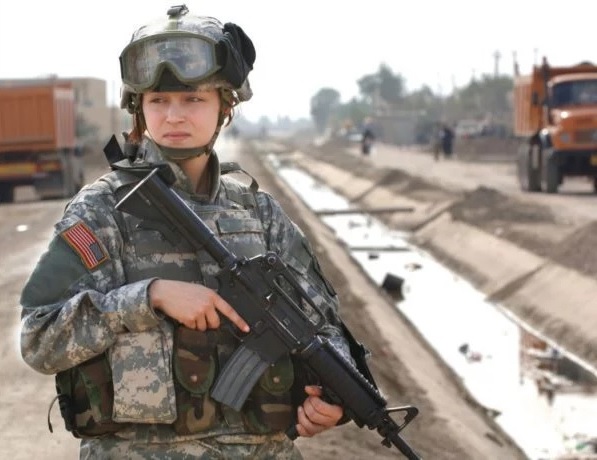When former US Secretary of Defense Leon Panetta announced in 2013 that the Department of Defense would open all military specialties to women, he gave three years to all concerned three years to implement this plan. And now the army must formulate not only the principles of integrating a new type of units into the harsh conditions of hostilities, but also appropriately study the physical and psychological interaction of men and women living and fighting shoulder to shoulder.
And then there was a change in dynamics: there was no doubt that the army would be able to recruit women to serve, but to ensure their effectiveness, the army leadership decided that ordinary women would need both female and non-commissioned officers, who would become mentors and role models for both men and women. As a result, some female sergeants were immediately offered a raise as soon as gender bans were lifted. Others came after the company to the media.
“Last year alone, we recruited more women than in the last decade: 14,000,” said Sergeant Major of the Army Dan Dailey in an interview with Army Times in July. “I now have 400 young women who have signed military service contracts.”
The army leadership did not expect such a stir. At the end of last year, more than 300 women were recruited or transferred to infantry and armored units, according to a published release from the US Army. As of August 22, according to Lt. Col. Randy Taylor, the army has 38 female officers in the infantry, 51 female officers in the armored forces, 224 female foot soldiers and 142 in the motorized intelligence units.
The beginning of the way
Before the army can send women recruits to undergo combat training, it is necessary to form a female personnel base on the ground. A team of specialists went to the field, to the army, where they first met with platoon sergeants and junior officers.

“At first, we instructed the bosses, because it was important for them to understand that we were preparing to attract their female military personnel to undergo combat training courses, because it was precisely their recruits who would receive approval for the training,” said one of the participants in the preparatory events. Then, soldiers and sergeants gathered in several classrooms and watched a three-minute video on the history of the integration of women into combat units. Their next step will be to visit a career consultant who will help women (their service life is at least 2 years) based on their experience and interests will offer the most suitable military specialty.
The training program started in September 2016 with the largest military bases Fort Hood, Fort Bragg, camps in South Korea, Hawaii and Germany were the first. Involved were Forts Campbell, Drum, Stewart, Carson, Bliss, Meade and Joint Base Lewis-McChord, as well as Fort Leonard Wood.
Sgt. Maj. Tamara Gregory, a veteran of the US Armed Forces, an adviser to the US Army Secretary for Labor Reserves, told the Army Times that she alone instructed 1,700 people in Hawaii in March to show interest in the new program. Seeing that military specialties in infantry and armored units are open to women, Gregory personally took part in the new program and was sent to Fort Benning, Georgia, to undergo tests, where she performed all the exercises on a par with men. Gregory retired this spring after 31 years of service.
Some time after the stratum of the training program for women military personnel in new military specialties, the first results appeared. Sgt. Shelby Atkins of the National Guard, at the age of 26, was the first to graduate from the engineering department, where 90% were men. According to her, she did not experience any discrimination or oblique views of her colleagues, but she doubted a little when the long march-throws and obstacle course were not easy. She became the first woman in the infantry unit of the US Army.
Despite the legalization of many specialties for women, they still try to keep them away from direct hostilities. Staff Sgt. Erika Stormont Erica Stormont National Guard pc. Oklahoma at age 28 became the first woman in the cavalry intelligence unit, joining the ranks of the National Guard at the age of 18 as a driver.
At the assembly point, she was told that this was the closest possible position to direct hostilities for women. But even so, in 2010 in Kandahar, Afghanistan, she was not allowed to participate in patrols while driving a special demining machine (MRAP). She coordinated the flights of combat helicopters throughout her mission and was very disappointed with this fact. Her opinion is unambiguous, despite the new opportunities for women, they are unlikely to be allowed to engage in direct battles.